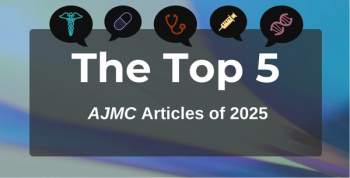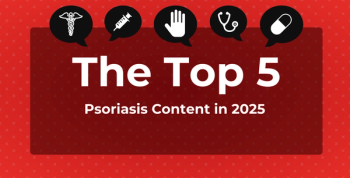
Study Finds Bacterial Infections Linked to Coronary Heart Disease in Patients With T1D
In individuals with type 1 diabetes (T1D), bacterial infections are associated with an increased risk of coronary heart disease, according to a study published in the Journal of Internal Medicine.
In individuals with type 1
Individuals with T1D have a substantially higher risk of developing
“CHD and cerebrovascular disease constitute of up to 75–80% of cardiovascular disease, and the single largest contributor to cardiovascular disease is atherosclerosis,” authors wrote. Those with T1D also have a high risk of developing infections in general.
To investigate the relationship between bacterial infections and CVD, in addition to the impact of diabetic nephropathy on CVD and infection risk in those with T1D, researchers assessed data from 3781 participants of the Finnish Diabetic Nephropathy Study.
The prospective follow-up study is a nationwide multicenter survey which began in 1997. At baseline visits, participants undergo a physical examination while attending physicians complete a standardized questionnaire. Data on the presence of potential diabetic complications, medication, cardiovascular status, and hypertension are collected for each patient.
Urinary and blood samples are also collected, and patients are prospectively followed-up with similar consecutive visits in 3‐ to 5‐year intervals. Follow-up ended when the individuals experienced a CHD event, passed away, or on December 31, 2015.
Of the 3781 participants, 370 experienced an incident CHD event. The mean number of follow-up years for the population was 13.7 (95% CI, 13.6-13.9). In 345 (9.1%) participants, diabetic nephropathy progressed from baseline to a more advanced stage during the follow‐up.
Analyses revealed:
- Individuals with an incident CHD event had a higher mean number of antibiotic purchases per follow‐up year compared with those without incident CHD (1.34 [95% CI, 1.16-1.52], vs 0.79 [0.76-0.82]; P < .001)
- Individuals with an incident CHD event exhibited higher levels of bacterial lipopolysaccharide (LPS) activity compared with those without incident CHD (0.64 [0.60-0.67], vs 0.58 EU mL−1 [0.57–0.59]; P < .001)
- Multivariable‐adjusted Cox proportional hazards models found the mean number of antibiotic purchases per follow‐up year was an independent risk factor for incident CHD (Hazard Ratio [HR] 1.21; 95% CI 1.14-1.29; P < .0001)
- High LPS activity was a risk factor for incident CHD (HR 1.93 [1.34-2.78]; P < .001) after adjusting for static confounders
- Individuals with on average at least 1 antibiotic purchase per follow‐up year had a 1.8 times greater cumulative incidence of CHD compared with individuals with less than 1 purchase per year
- The number of antibiotic purchases per individual increased significantly already up to 2 years before the events, compared with the matched controls
- Antibiotic purchases were a significant risk factor for incident CHD in individuals with sustained normal albumin excretion rate (AER) as well as macroalbuminuria, but not in individuals with sustained microalbuminuria
Overall, antibiotic purchases, reflecting bacterial infections in outpatient care, were found to be significant risk factors for incident CHD. “This statement is based on our proportional hazards model that showed that each annual antibiotic purchase increased the risk of an incident CHD event by up to 21% even after rigorous adjustment for traditional risk factors of CHD,” researchers wrote.
Investigators also found a difference in profiles of antibiotic treatments in those with and without incidence CHD. Individuals with T1D with incident CHD had a 2 times higher proportion of fluoroquinolone treatments compared with those without incident CHD.
Included register data was only collected on antibiotic purchases, or bacterial infections treated in outpatient care. The lack of bacterial infections treated in hospitals thus marks a limitation to the study. However, previous studies show only roughly 6% of bacterial infections in individuals with T1D are treated in hospitals and the remainder are treated in outpatient care. The data analyzed also do not show whether individuals actually ingested purchased antibiotics.
Researchers cautioned the observational nature of the study precludes drawing any causational conclusions.
"In broader terms, the present study demonstrates how infections associate with the development of late diabetic complications and perhaps even more importantly, how infections associate with the development of CHD, as the latter relationship has been disputed during recent years,"
"Interestingly, in our study this association to incident CHD was seen specifically with antibiotic purchases, making the potential pathophysiologic mechanisms behind this finding intriguing and warranting further studies," the authors concluded.
Reference
Simonsen JR, Järvinen A, Harjutsalo V, et al. The association between bacterial infections and the risk of coronary heart disease in type 1 diabetes. J Intern Med. Published online August 4, 2020. doi:10.1111/joim.13138
Newsletter
Stay ahead of policy, cost, and value—subscribe to AJMC for expert insights at the intersection of clinical care and health economics.








































